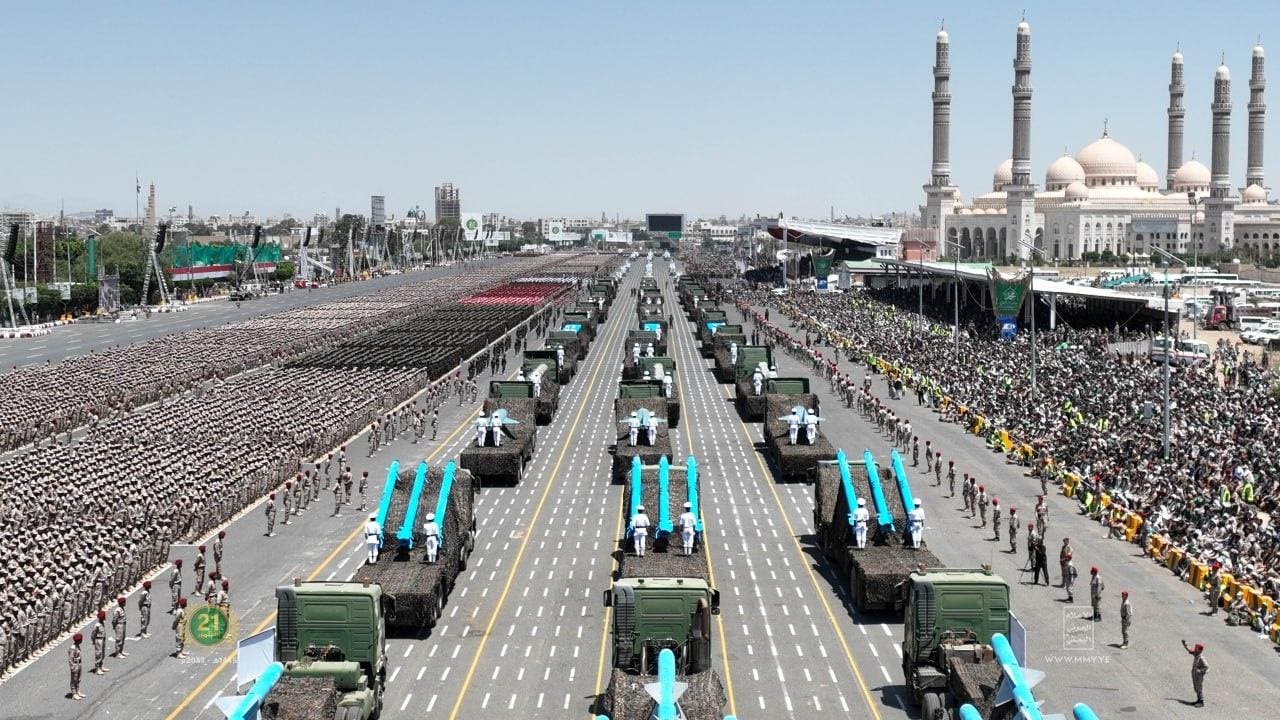The Iran-backed Houthi movement, based in Yemen, has launched three rounds of missile attacks targeting Israel using ballistic and cruise missiles.
On October 31st, the Houthis, a largely Shia-Islam group whose leadership is drawn from Yemen’s Houthi tribe, announced that they had launched a “large number” of rockets, ballistic missiles and drones towards Israel.
None of the projectiles were reported to have reached targets inside Israel, having fallen short or having been destroyed by missile defense systems. Additional rounds of Houthi missile fire and drone launches have followed over the last week-plus.
Targeting the port of Eilat in southern Israel with missiles fired from Yemen’s Houthi capital, Sana’a, requires a long flight of approximately 1,144 miles (1,842 km) north along the Red Sea. The distance could be reduced if missiles could be launched from the extreme northwest point of Yemen.
The most notable volley involving a Houthi-fired ballistic missile could have flown this route. It was intercepted during the October 31 launches by Israel’s Arrow 3 missile defense system which the country co-developed with the U.S.
The first operational employment of the high-altitude Arrow 3 system saw its two-stage (solid-fueled booster with separating kinetic kill vehicle) interceptor reportedly destroy the Yemeni missile over the Red Sea. The kill was made at an altitude somewhere near the 60-mile threshold above the surface that conventionally defines the border of the earth’s atmosphere and space.
Earlier in October the USS Carney, a U.S. Navy guided-missile destroyer in the northern Red Sea, shot down four cruise missiles and multiple drones reportedly fired from Yemen towards Israel. Until these recent launches the missile threat from Yemen was understood by a relative handful of observers outside the U.S. military and intel community. But since the Houthi missiles have been unleashed, more light has been shed on what they are firing.
Several types of missiles in the Houthi arsenal were seen in a late September military parade in Sana’a, Yemen. Among those on show was a derivative of the Iranian liquid-propellant Qiam ballistic missile. Dubbed the Aqeel, the guided missile has an approximate 620-mile (1,000 kilometer) range.
A previous version called the Falaq was the first precision-guided ballistic missile seen in Houthi service. Both missiles are significant improvements over the un-guided ballistic missiles previously operated by the group. It’s unknown if either of these variants was intercepted by the Arrow 3 system or whether it shot down another type of missile.
The Houthis also have a mid-range variant of Iran’s Zolfaghar ballistic missile which is part of Tehran’s Fateh family of missiles. In February 2019, Iran’s Revolutionary Guards Corps displayed a larger version of the Zolfaghar, called the Dezful which according to the Center For Strategic and International Studies, has a range up to 620 miles (1,000 km).
A longer range Toufan (Typhoon) ballistic missile reported to be in Houthi hands capable of striking at distances of 840-1,180 miles (1,350-1,900 km,) has been linked with Iran’s Ghadr ballistic missiles. The Toufan’s longer range suggests it may indeed be the kind of ballistic missile downed by the Arrow 3.
The Houthis also chose to show off their Quds 4 cruise missile during the September parade. Part of a family of land and sea attack cruise missiles developed by Iran, the Quds has a range somewhere in the region of 500 miles (800 km).
A Quds Z-0 land and sea variant reported to have either an electro-optical or infrared seeker may have been the type of cruise missile downed by USS Carney as it intercepted missiles seeking ships or other targets in the Red Sea.
In a lesser-publicized incident on November 2, an Israeli F-35 shot down what the IDF said was a cruise missile fired from Yemen. According to Janes, footage showing a turbojet-powered cruise missile flying at high speed and low level suggested some type of Quds missile.
The F-35 may have downed it with an infrared-guided Raytheon AIM-9X Sidewinder short-range air-to-air missile or radar-guided AIM-120 Advanced Medium-Range Air-to-Air Missile (AMRAAM).
It’s possible that Iran’s recently revealed Paveh guided cruise missiles could have been supplied to the Houthis as well. A senior Iranian general unveiled the new cruise missiles, with a range of 1,025 miles (1,650 km) early this year, noting their ability to strike Israel from Tehran.
While exact details regarding the range and warheads of the missiles noted above is hard to come by, their derivation from Iranian designs and supply from Iran itself points to active, if indirect, Iranian participation in the Israel-Gaza War.
The missiles’ presence in Yemen within a movement not formally recognized as legitimately governing the territory it controls within the country is yet another example of Iran’s supply of advanced weapons to non-state actors. Sadly, it’s a phenomenon Americans will see elsewhere throughout the world in years to come.
Read the full article here





